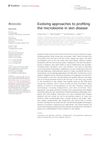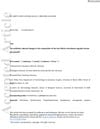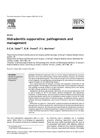Deciphering the Microbiology of Hidradenitis Suppurativa: A Step Forward Towards Understanding an Enigmatic Inflammatory Skin Disease
August 2015
in “
Experimental Dermatology
”
TLDR Hidradenitis suppurativa may involve gut and oral bacteria, suggesting targeted treatments could help.
The study explored the microbiology of hidradenitis suppurativa (HS), a chronic inflammatory disease of the hair follicle, highlighting the role of bacteria in its pathogenesis. While HS lesions were traditionally thought to be sterile or colonized by common skin pathogens, recent findings indicated that anaerobic bacteria, often originating from the gut and oral microbiota, were prevalent in chronic HS lesions. These bacteria, termed 'pathobionts,' likely contributed to inflammation and lesion extension. The study suggested that HS might be a hair follicle barrier disease, with atypical infections due to abnormal innate immunity responses. The findings emphasized the need for targeted antimicrobial treatments and further research into the early microbiology of HS lesions to identify potential inflammatory triggers and optimize treatment strategies, reducing reliance on antibiotics to prevent resistance and preserve essential commensal microflora.


